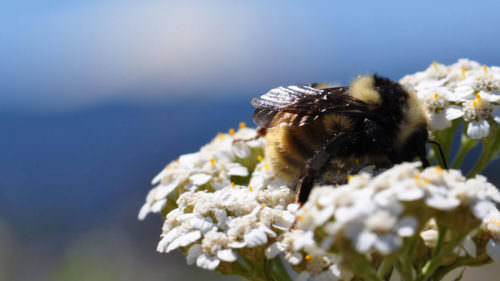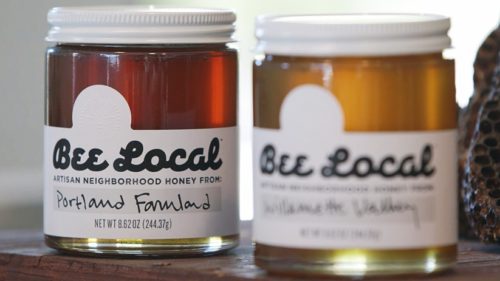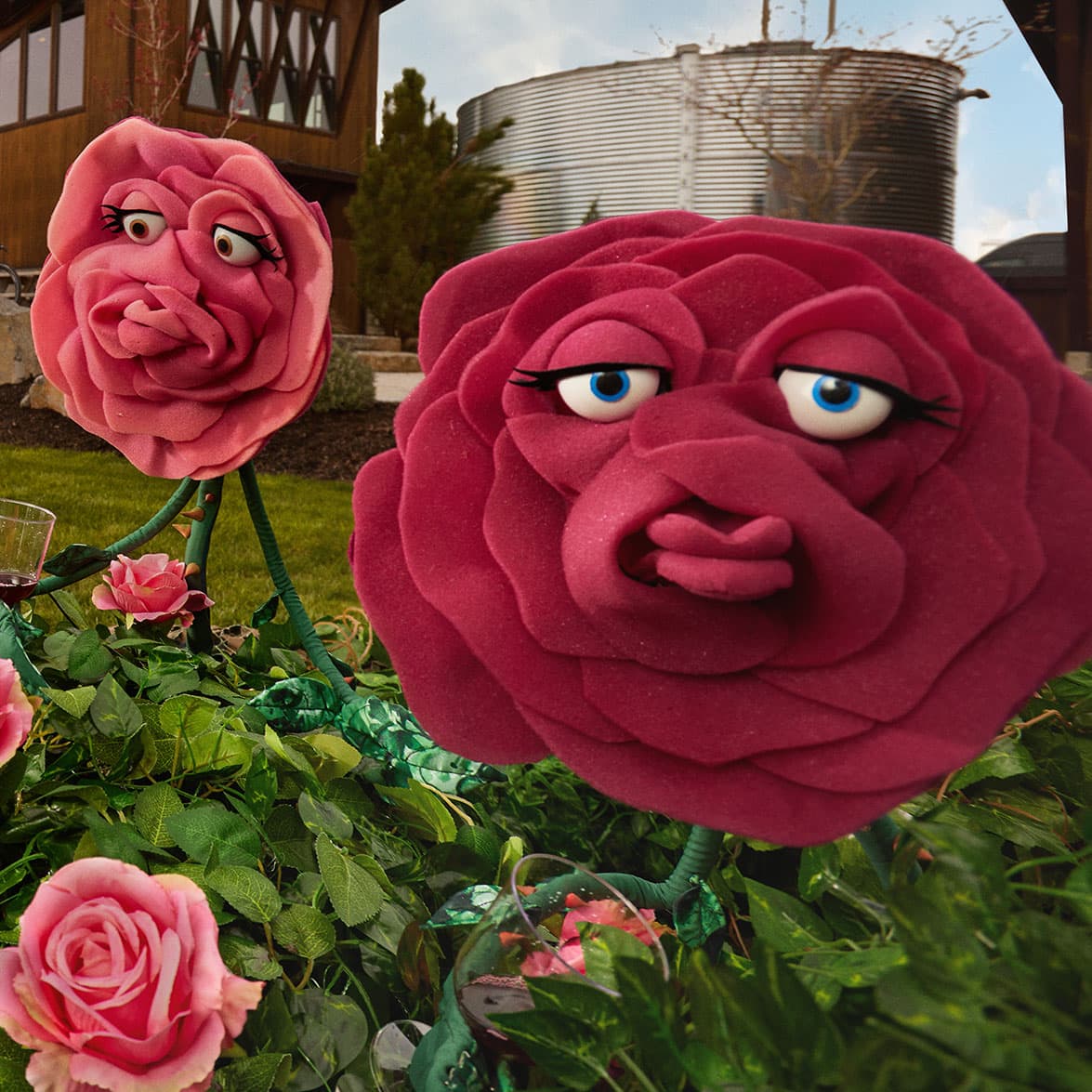Scott Perkins started beekeeping years ago as a hobby. His first two hives soon became seven, then surged to dozens. Now he and his wife, Jessica Jones, run Queen’s Bounty, and together they care for approximately 600 hives of honeybees, all located in a network of property hosts near Eugene. What makes their business extra sweet is that it’s a community effort.
It all starts with what the bees eat. In order to ensure their honeybees can find enough forage (nectar and pollen from blooming plants within flight range), the hives are separated into small groups, usually 16 to 24 hives per bee yard. And yes, sometimes that’s even a backyard.
Jones has found people want to host for two main reasons. “The bees provide pollination for their plants,” she says, “and they are concerned about the decline in our pollinator populations and want to help bee survival.” With more than 40% of the overall insect population down and biodiversity declining due to agriculture and development, every hive makes a difference.
One of Jones’ favorite parts of beekeeping is that it heightens a person’s awareness of the natural world. She’s become highly attuned to even small changes that will impact the bees — from knowing exactly what flowers are blooming throughout the season to worrying if a heavy rainstorm will knock blackberry blooms off the vines.
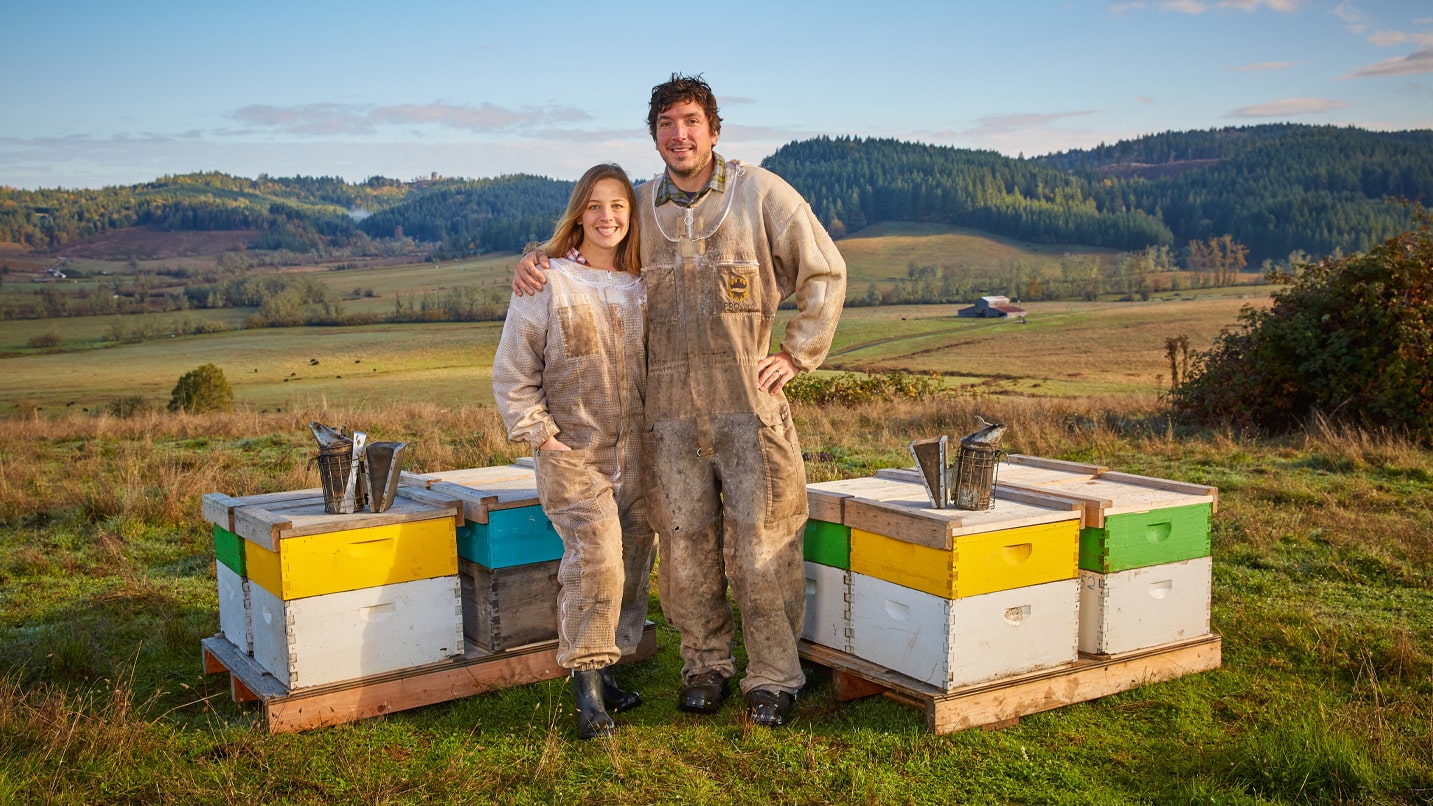
How Bees Make an Impact in Oregon
Perkins and Jones are just part of a growing number of people in Oregon working to preserve these essential workers threatened by climate change. Many cities across the state, from Ashland and Eugene to Hillsboro and Newport, have joined Bee City USA, uniting to improve their landscapes for pollinators by increasing the abundance of native plants, providing nest sites, and reducing the use of pesticides.
Since launching the Oregon Master Beekeeper Program at Oregon State University in 2012, the state has been proactive about pollinator protection, working to promote beekeeping and raising awareness of native pollinators — an estimated 630 species in the state — and the role they play.
According to the World Wildlife Fund, almost 90% of wild plants and 75% of leading global crops depend on animal pollination. In Oregon honeybees play an essential role in agriculture: In the Willamette Valley alone, farmers produce more than 170 crops, and each year bees rev up to pollinate everything from clover and carrots to cherries.
“Honeybees need a lot of flowers to keep their hives well stocked,” says Jeremy Mitchell of Flying Bee Ranch in Salem, who regularly works with novice beekeepers and volunteers with the Oregon State Beekeepers Association. “Think of hundreds of thousands of blossoms per hive!” Honeybees will forage in about a 3-mile radius from their hives, or about 28 square miles.
“All of our bees, wasps and other pollinating insects have beneficial roles in the ecosystem,” he says. “I love to convince people that hosting native bees in your lawn or bumblebees in your birdhouse is a real treat. How cool is it to be able to observe these creatures up close?”
Even chefs help pollinators with onsite kitchen gardens. In Portland, Noble Rot’s extensive rooftop garden produces vegetables, herbs and flowers for the restaurant. Jory Restaurant at the Allison Inn and Spa in Newberg features vegetables harvested daily from their 1.5 acre chef’s garden. Over in Bend, Jackalope Grill gets creative with tiered planters and boxes to grow vegetables and herbs on their compact patio.
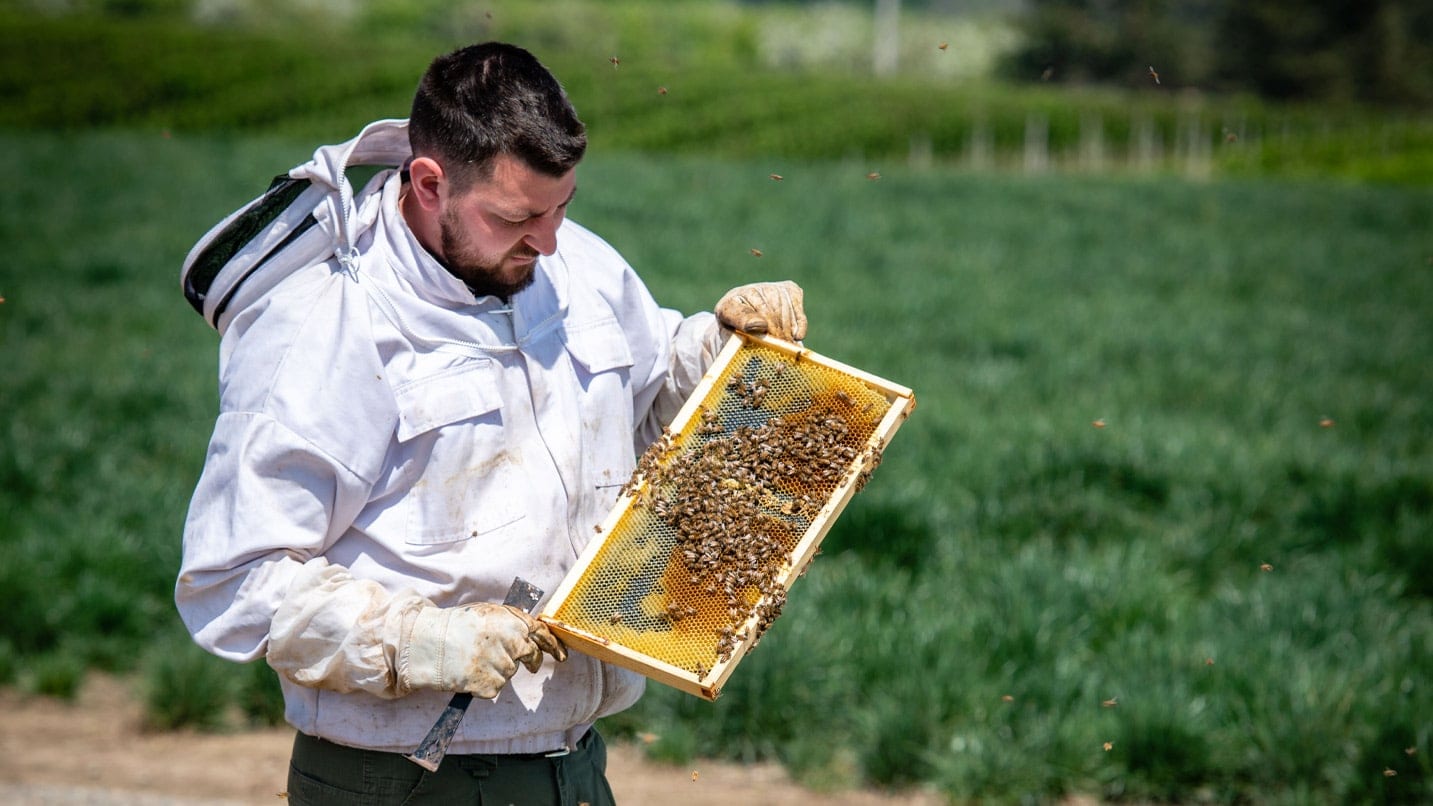
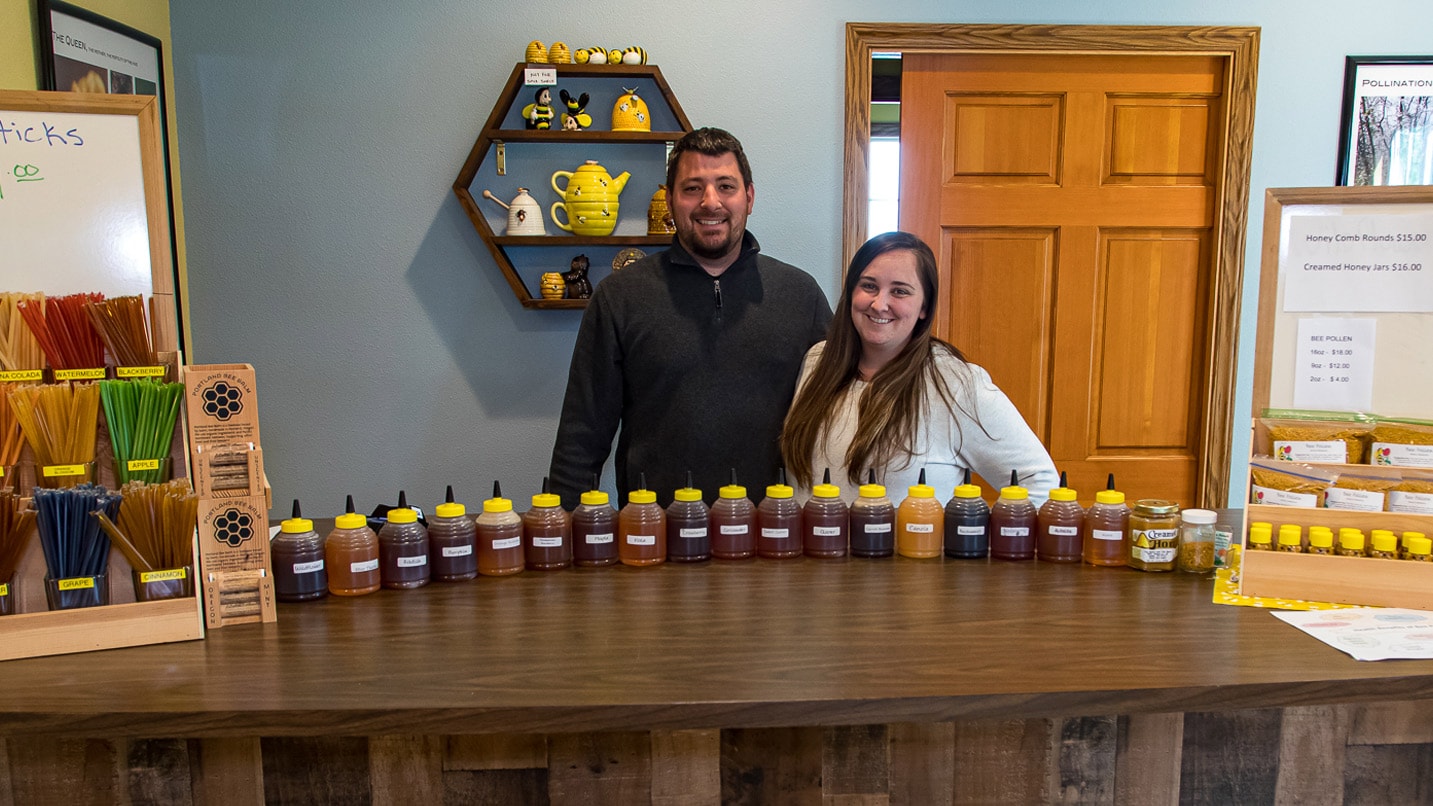
Experience Oregon Honey
You can experience one of the few tasting rooms for honey at Flying Bee Ranch, where Mitchell and his team feature more than a dozen local honey varieties, along with other products from the hive including bee pollen and honeycomb.
“Honey is like wine. The soil composition and the weather highly influence the taste,” says Mitchell. “We love capturing that and sharing with others.” The ranch specializes in producing local, raw, unique honey varieties.
What you find at grocery stores is often a blend of honeys, so they lose some of the unique flavors. Flying Bee Ranch varietals are classified by what the beekeeper observes to be the primary nectar sources based on hive location and season — for example, one of Mitchell’s favorite honeys is lavender, produced by his bees. He places hives near particular flower crops, each blooming at a specific and limited time, to create a line of single-flower varietals.
A rare honey that’s also quite popular is produced from carrot blossoms in Central Oregon. “Carrot honey has a wonderful aroma, sharper than most, almost like an exotic wood,” says Mitchell. “It has a strong flavor, which will initially impress you as caramel; but then begins the intriguing journey of aftertaste. It’s a little like tasting what rain smells like.” Even weeds like Scotch broom can be turned into single-flower honey, which has a tangy apricot profile.
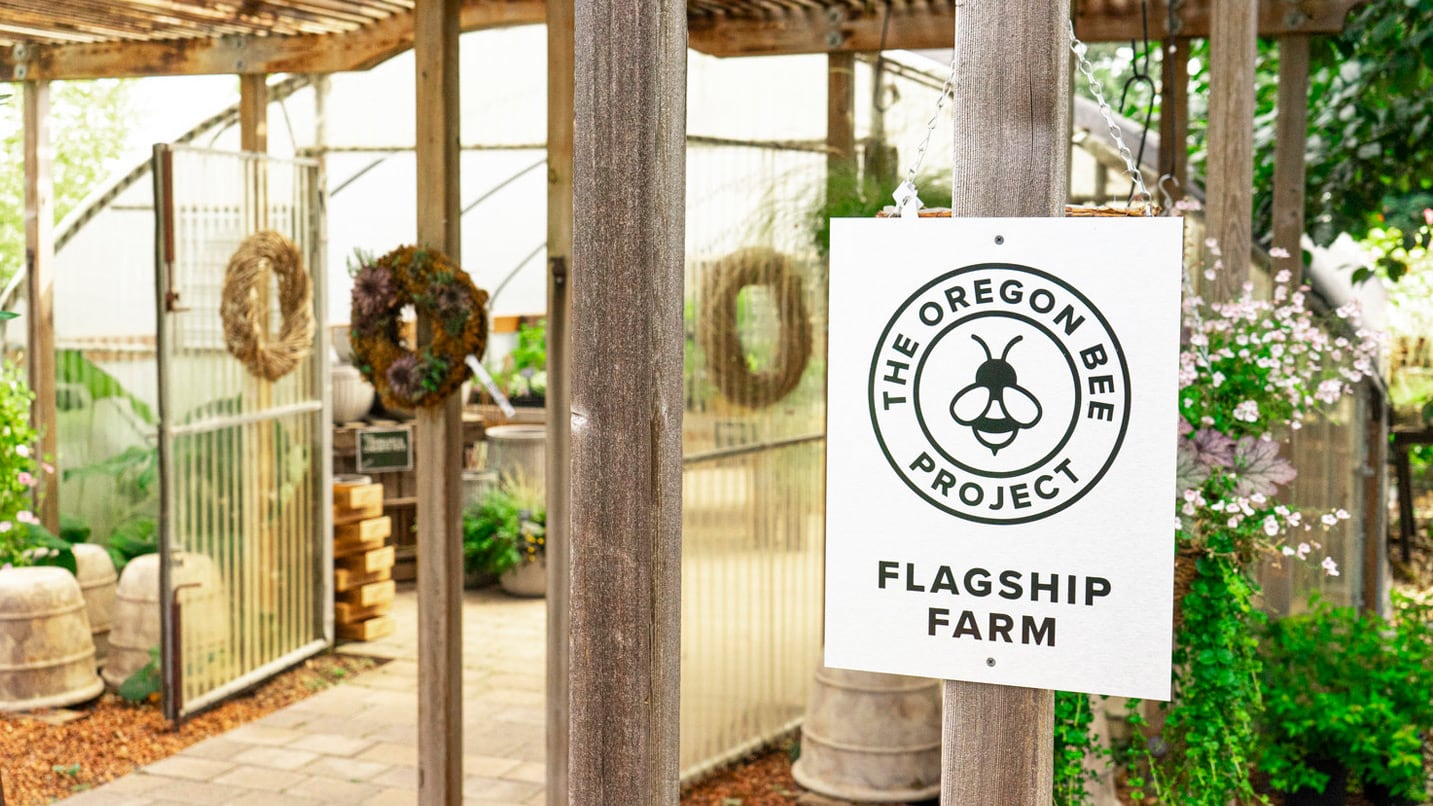
Pollinator Trails, Flagship Farms and Honey
In Oregon’s spring and summer months, when the days are long and warm, you can catch bees and other pollinators at their buzziest time of the year. The sun-soaked days provide pollinators maximum time to forage for nectar, and you can watch their waggle dance around bright blooming flowers and shrubs.
Some of the best places to catch bees in action are at Oregon’s farms and nurseries, especially Flagship Farms, an initiative launched by the Oregon Bee Project in 2017. One of the leading challenges for honeybees is loss of native habitat, so farmers and nursery owners across the state plant for pollinator diversity, boosting bee habitats and health.
At Durant at Red Ridge Farms in Dayton, to take just one example, a 165-acre oasis of meadows and meandering gardens includes a 1-mile educational nature trail that wanders by lavender fields, where the hives are managed by Oregon Bee Keeper. Durant’s gift shop features not only their signature estate olive oil but also small-batch Old Blue Raw Honey, collected from hives near Corvallis by expert beekeeper Henry Storch. Storch — who won a coveted Good Food Award for his Bigleaf Maple Harlan and Wild Blackberry Harlan honeys in 2017 — offers a creative quarterly subscription service for the sweet stuff.
For other Oregon honey to purchase, seek out producers at local farmers markets. For honey from Good Food Award winners, check out the full list for varieties and locations, or visit the websites of some of the standouts: Bee Girl Honey in Ashland, Jacobsen Co. Honey in Netarts and Portland, and Cascade Girl Honey in Southern Oregon, which not only sells honey but also organizes an annual Oregon Honey and Mead Festival in Medford (this year on June 4, 2022).
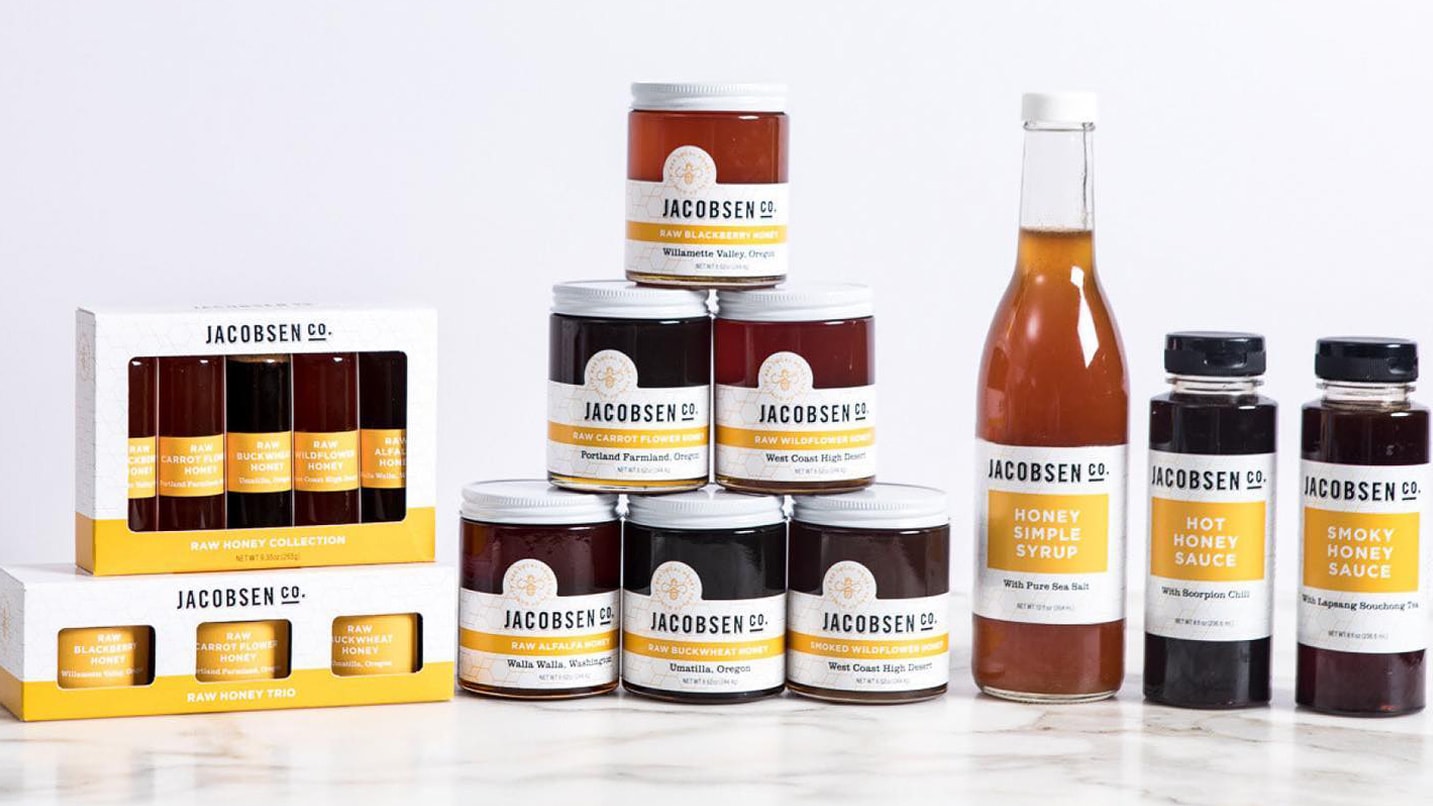
Bee-Friendly Wine Touring
Growing from the Flagship Farms project, there’s a great initiative buzzing about. “We have a bee-friendly wine route in the works,” says Andony Melathopoulos, an assistant professor of pollinator health in the Department of Horticulture at Oregon State University. Launching in 2023, the tour will expand the conversation around pollinators while also providing an engaging wine-country experience.
One of the set stops — a Flagship Farm like the other wineries mentioned below — will be Willamette Valley Vineyards, where their pollinator team launched a mason-bee project in 2019, placing boxes throughout four different vineyard sites to provide the bees a safe environment to nest and pollinate. In 2021 the nearby Left Coast Estate planted a pollinator garden above their wine cave and seeded 30 acres of their oak savannas with native flowering plants for forage. Other participants to support include Winter’s Hill, Montinore Estate and Soter Vineyards.
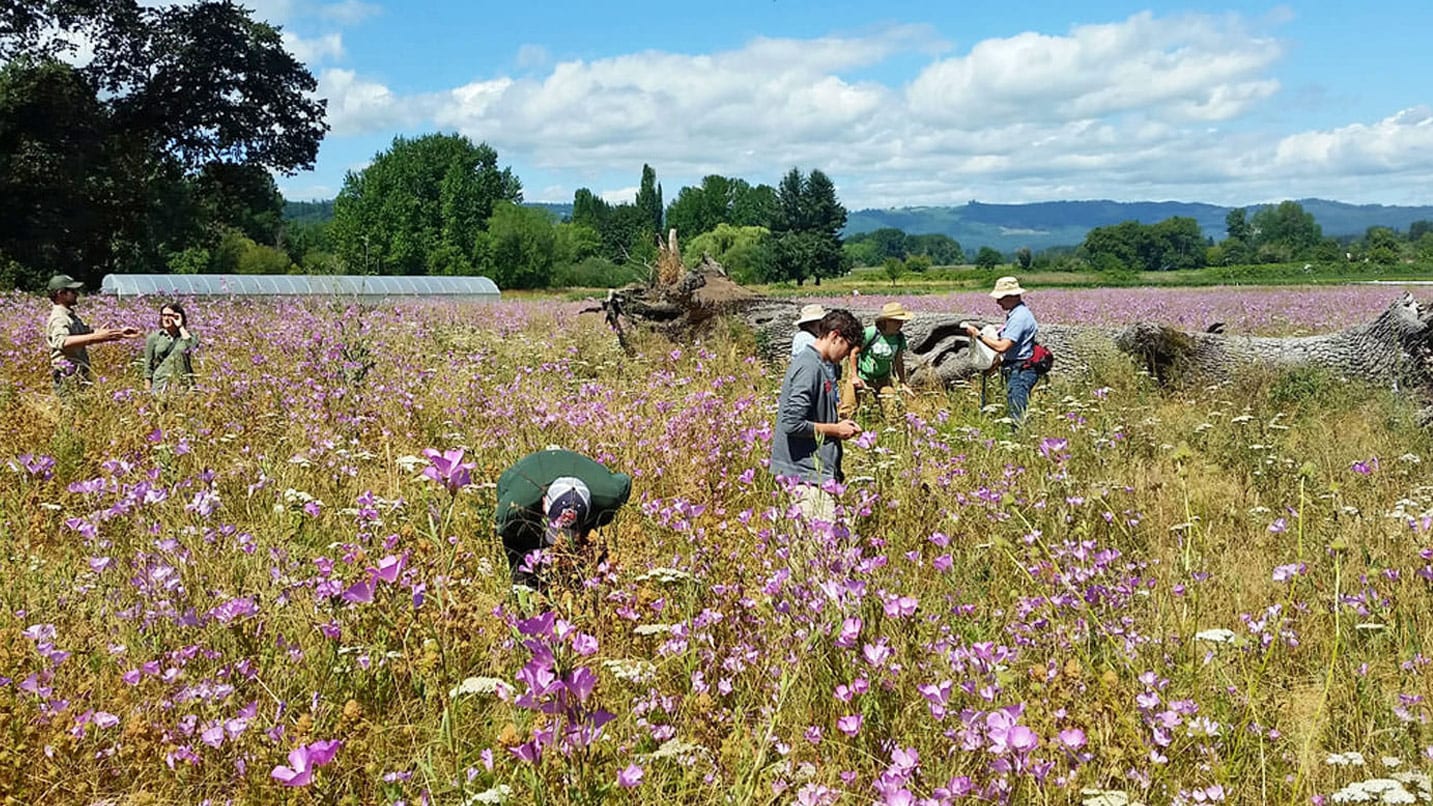
Citizen Scientists and Master Melittologists
Something surprising about bees in Oregon is the unexpected areas where you can find extreme bee biodiversity. Melathopoulos points out that some are not even often associated with wildflower blooms and bees, like Steens Mountain and the Alvord Desert.
Local Master Melittologists — a title you can earn through a program that trains volunteer entomologists to specialize in the study of bees — often get to contribute to the research. One volunteer working on the Oregon Bee Atlas project in 2018, for example, spotted Oregon’s lava hole bee in McKenzie Pass’ lava fields. This rare bee hadn’t been seen in Oregon since 1969. Another volunteer, Hood River-based scientist and backyard beekeeper Eileen Garvin, chronicled her experience on the Oregon Bumble Bee Trail and wrote a national bestselling novel intimately indebted to the lives of these creatures.
How can you help support these little wonders, too? Follow blooms and embark on a wildflower hike this summer, visit farms with pollinator programs, and enjoy the sweet taste of their singular nectar.
